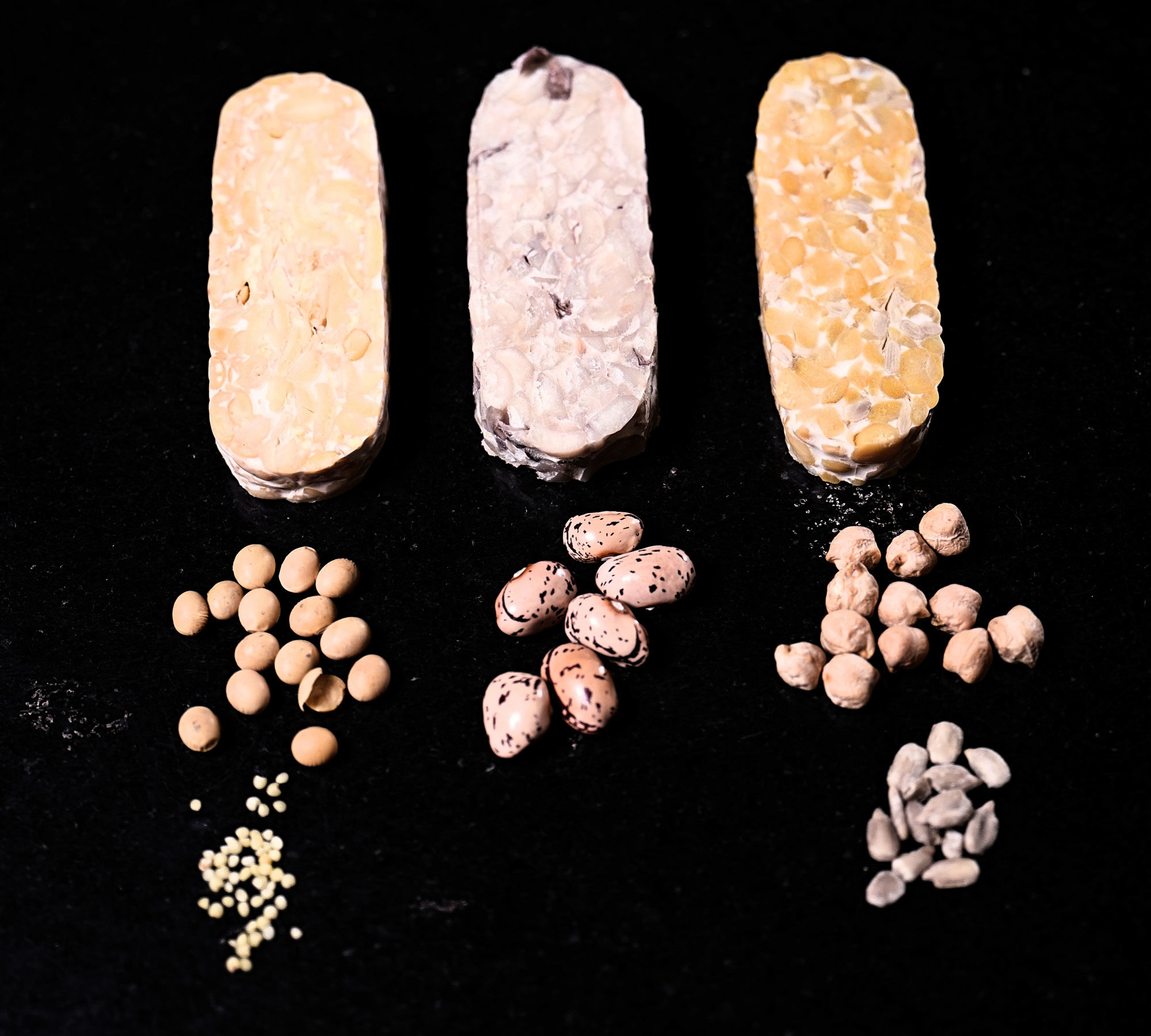What is tempeh?
Tempeh is all at once a fascinating fermentation process, a food choice that protects our environment, and the best way to eat pulses on a daily basis.
Why pulses?
Lentils, peas and beans enhance the soil from which they grow, and are essential ingredients of a healthy diet.
Loaded with protein, fibers and micronutrients (such as B vitamins and minerals like iron, potassium, magnesium, zinc and calcium), pulses are known to protect our cardiovascular system and other vital organs. They contribute to a healthy lifestyle and are a staple of a plant-based diet. Growing legumes also improve soil quality: their root system, in symbiosis with microorganisms, is able to capture nitrogen present in air and fix it in soil. The resulting soil is rich in humus and becomes more fertile, with a better structure and water holding capacity. It requires less fertilizer—or even none at all. No wonder that in sustainable farming, legumes are used between two other crops as “green manure”! Given their many qualities, promoting pulses and increasing awareness on their importance has become a priority for the Food and Agriculture Organization of the United Nations in 2016, declared the International Year of Pulses. Every year, February 10th is now also observed as the World Pulse Day.+
What about tempeh?
Tempeh is the union of pulses with a mushroom, which “predigests” and binds the seeds. The resulting block is packed with protein, easy to digest, has a firm texture and a delicious taste not resembling any other food.
After soaking and boiling the beans, peas or lentils, we mix them with spores of Rhizopus, a specific genus of fungi. We then incubate this blend at about 30°C for 24 hours, allowing the rhizopus mycelium to grow between and inside the seeds, which binds them together. In tempeh, the mycelium is the white layer all around the ingredients. Through enzymatic activity, the tempeh mycelium breaks down specific compounds present in pulses such as anti-nutrients (like phytic acid) and molecules otherwise less digestible, enabling an optimal absorption of all available micronutrients: iron, potassium, magnesium, zinc, calcium, and some B vitamins. As a result of this fungal fermentation, tempeh features a firm texture, an umami taste reminiscent of mushrooms or nuts, and many health benefits arising from high levels of protein and prebiotic fibers—not to mention the absence of trans fat. The tempeh process originated in Java (Indonesia), where the ambient temperature and humidity promote Rhizopus spores’ development on foliage. Since its invention (first written records about tempeh date back to the early nineteenth century), soy tempeh has been a staple food in Indonesia.+
Le Bon Tempeh: even better tempeh
Our tempeh is hand-made from various organic ingredients grown in Switzerland, and we freeze it fresh to preserve all its qualities, without pasteurisation.
All our products are organic and certified with the Bio Suisse label “Bourgeon Suisse”.
We do not just make soy tempeh: we like to mix our pulses (soy, but also chickpeas, lentils and other beans) with seeds or grains to vary the tempeh taste, texture and benefits. We select our ingredients among the available organic crops grown in Switzerland, in line with the “Bourgeon Suisse” specification from Bio Suisse. Our certificates are available using this link. To perfectly control the fermentation and produce delicious tempeh full of mycelium, we follow an artisanal, small batch process, relying on our know-how and experience. We stop fermentation by freezing, when the mycelium is fully developed and the taste is still tender and fresh. Our tempeh is kept frozen for distribution to stores, its rhizopus culture still alive, but asleep. Why do we freeze? Tempeh conservation is tricky. Most often, producers pasteurize, vacuum seal and refrigerate their tempeh—which is then easier to distribute. However, this conservation also surrenders tempeh’s fresh taste and texture, turning it into a dryer, compact and bitter product. We believe that this unfortunate treatment explains why, still today, tempeh remains so little known. This is what sparked the creation of our tempeh, based on fine local and organic ingredients, which we skilfully culture, and with all its qualities perfectly protected through freezing: Le Bon Tempeh.+

